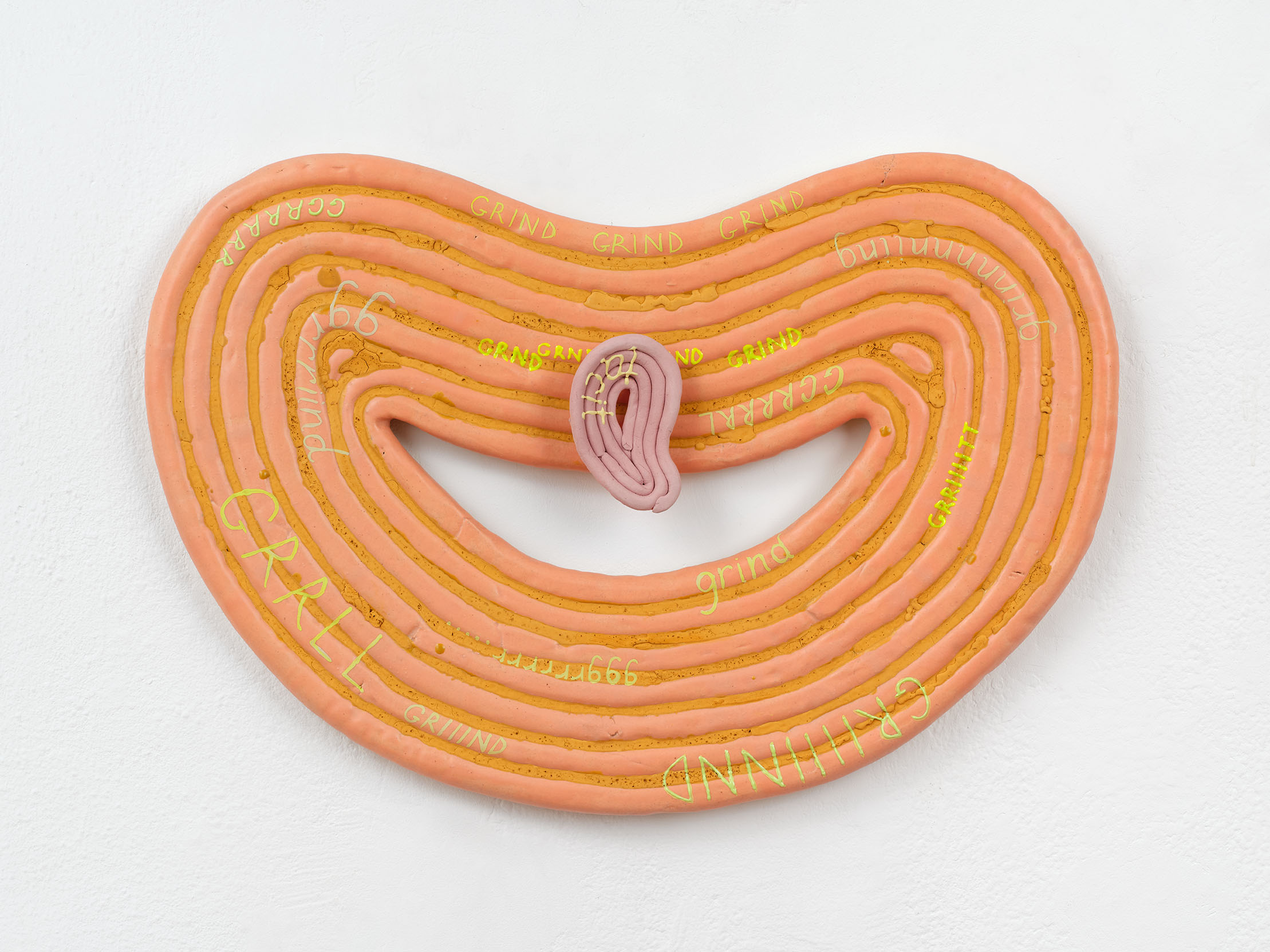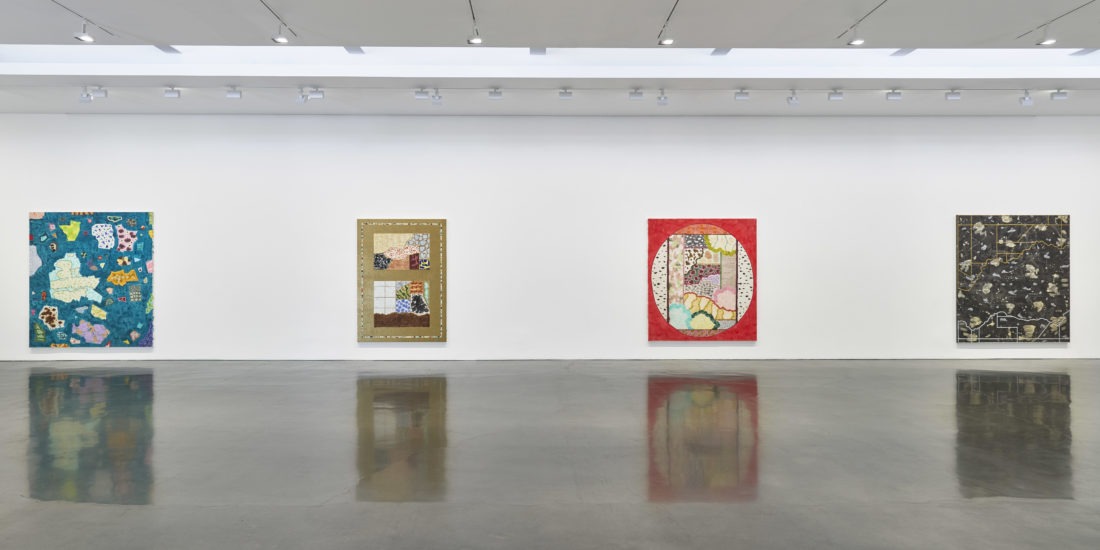EMOTIONAL BODIES
Anna Sew Hoy in conversation with Dorothée Perret
Cypress Park, Los Angeles, Summer 2025
The sculptures of Anna Sew Hoy (Auckland, 1976) evoke surreal bodies made of clay, often interwoven with found objects from everyday life, such as computer components, chains, or denim. Through her experimental and often humorous approach to these materials, Sew Hoy operates at the intersection of art and craft, creating works that embody both abstraction and figuration. Sew Hoy’s performance, writing, and curatorial practices complement her studio work, and for the last decade she has created public art installations across the United States as well.
Following her exhibition at Commonwealth and Council in early 2025—The Screaming Cumulus—Sew Hoy and I sat down to talk about her work, her friendships, and her love for denim.
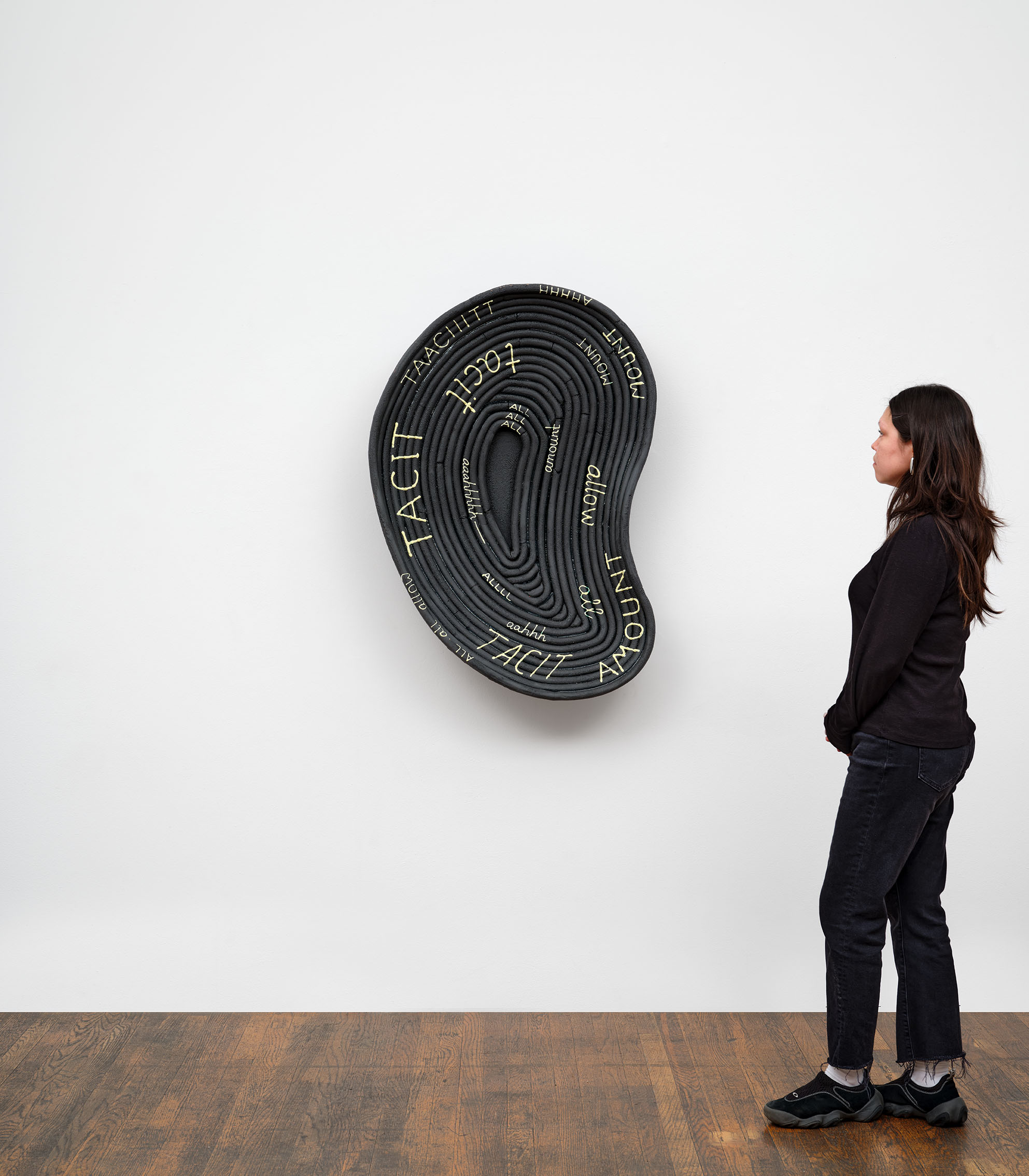
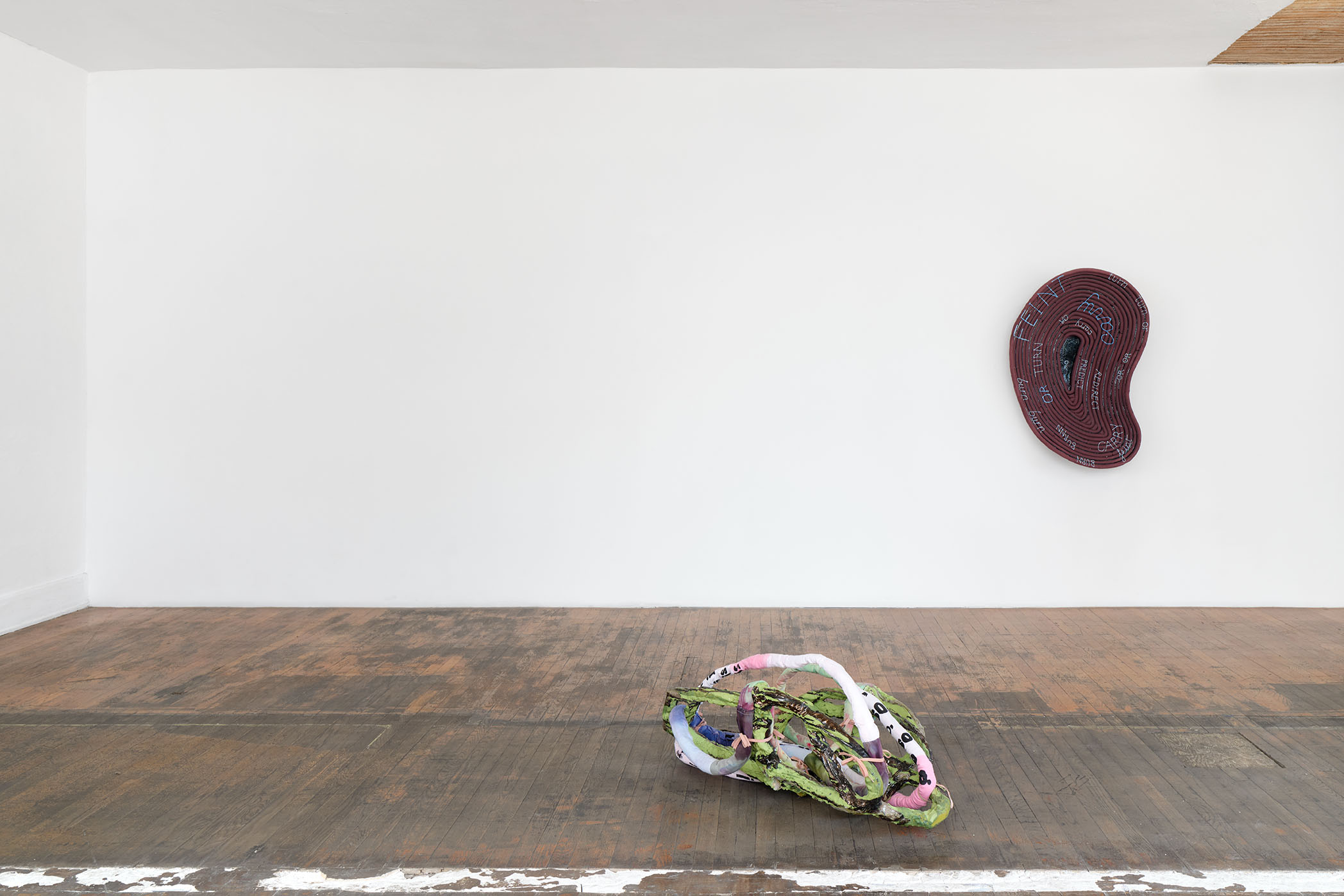
Dorothée Perret: I found the sculptures in the exhibition The Screaming Cumulus [Commonwealth and Council, Los Angeles, February 1–March 15, 2025] to be incredibly expressive. They’re composed of body fragments—the ear, for instance—which immediately caught my attention. At first, I wondered if you were intentionally playing with the space between abstraction and figuration. It seems you often gravitate toward that in-between place—where the work isn’t entirely literal, yet it’s still undeniably rooted in the body. There’s a quiet ambiguity to it that nonetheless feels very intentional.
Anna Sew Hoy: Thank you Dorothée. I’m creating simple, pared-down shapes that still resonate as multiple—something that can be read as a smile, a heart, and a kidney-shaped swimming pool for example. This multiplicity echoes my experience of being in a body. We each “inhabit” one, but we cannot see ourselves. Where do we begin and end? When we think, what spaces do our thoughts inhabit? What forms do they take? I become a fly on the wall observing myself exist as a body.
Perret: I see your new work as a continuation of bodies of work I’ve seen from you before. At the same time, it felt like you were trying to create a sense of space within the gallery using these shapes and forms. These elements felt both fragmented and yet suggestive of a desire to reconstruct or evoke whole bodies. What was the exhibition about?
Sew Hoy: The show was about relationships, reflected in the spaces between the sculptures. The space between people is the space of relationship. This is where emotion evolves; it’s a magnetized and energetic space.
I was thinking through a communication breakdown by pairing words and abstract sculpture. I was concerned with listening versus understanding, with communication with the self and others, thus the focus on ear-like and mouth-like shapes. I experience relationship in a physical and sensorial way—the physical feeling of whispering versus screaming and of being whispered to versus screamed at—and hearing how words mean something to the speaker but then have to be taken in by another mind. So the sculptures themselves are in relationship—they are speaking and listening. I was thinking through the risk of trying to be understood by another, and the translation process between people. As a viewer you walk through the exhibition reading voice and seeing listening.
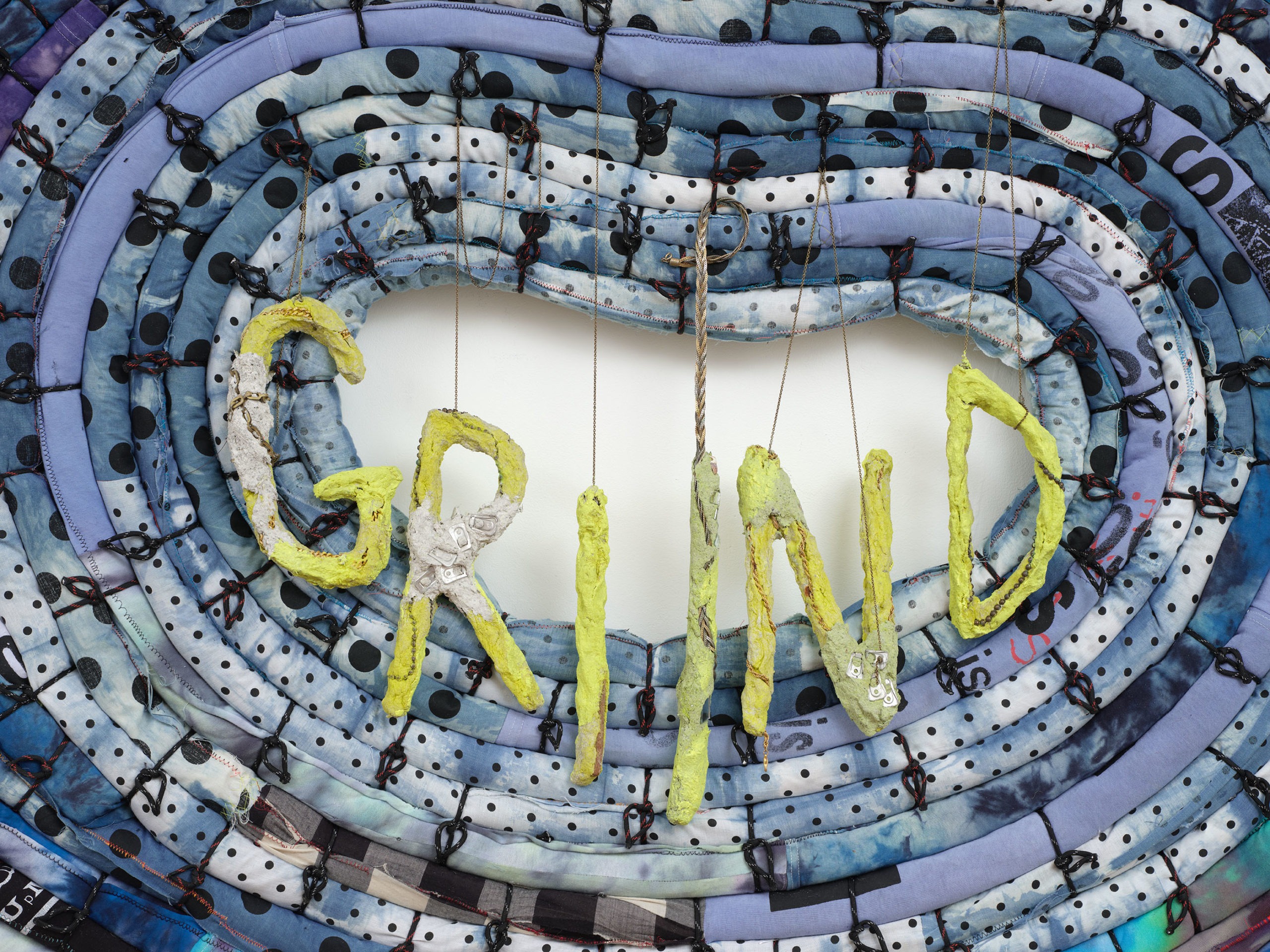
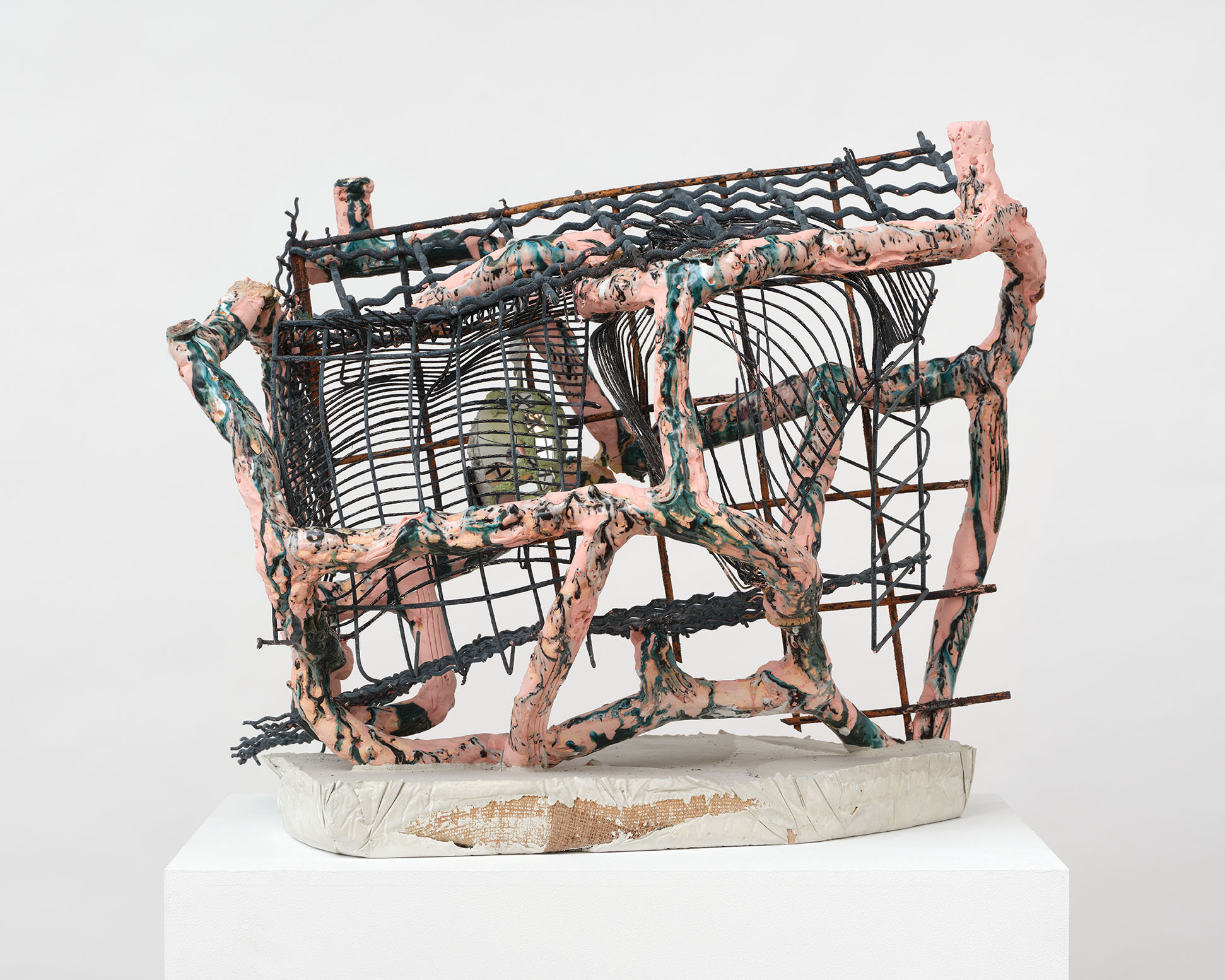
Perret: There’s another dimension of your work worth exploring, which I’ve experienced personally in the context of the exhibition Scratching at the Moon [2024, Institute of Contemporary Art, Los Angeles]. It’s the way you gather people around your practice—not just as a community, but perhaps more intimately, through friendship. Friendship, after all, feels more attuned to emotion and affect. It opens a space where feelings are not only acknowledged but shared—much like the emotional resonance you spoke of earlier, the way your sculptures become vessels for feeling.
Sew Hoy: Yes, my friendships have often been a subject. I think of them as a fabric or a web that holds me, where I also hold my friends. And you and I really cemented ours through the making of the catalog for Scratching at the Moon, which you designed and co-published.
Scratching at the Moon came about during the COVID pandemic. I was in conversation with other artists and writers online, as well as trying to teach ceramics online as a professor at the School of Art at UCLA. I realized how very important my artist friends were to my life, how so much of what happened in my career was due to my collaboration with friends. I was meeting with AAPIAN [Asian-American Pacific Islander Arts Network], a group brought together to process the overt racism we faced in this time of the “Chinese flu.” AAPIAN was a lifeline. As I continued to think of important people in my life, I remembered that Simon Leung and Bruce Yonemoto gave me my first teaching jobs at UC Irvine. Karin Higa asked me to participate in my first museum exhibition. I was in a band with Amy Yao over twenty years ago, and we played at Wendy Yao’s store Ooga Booga. I wanted to create a show that highlighted my community of artists and thinkers who were changing the world for many, but were unnoticed by the mainstream. SATM was an amazing project because it just grew and grew, adding more collaborators and supporters as it evolved. It became quickly obvious that it was something that many people wanted to happen.
An early precursor may have been POW!, my show at LAXART in 2008. I made a seven-foot-tall left-wrist cast and a six-foot-long ankle cast, inspired by my dad who was an orthopedic surgeon. And then people came together in the exhibition space at LAXART and signed them, creating a record of all who gathered around at that early time. My favorite uncle and aunt were there. Mark Bradford was there and signed the top of the wrist cast, which was a brag because he’s so tall.
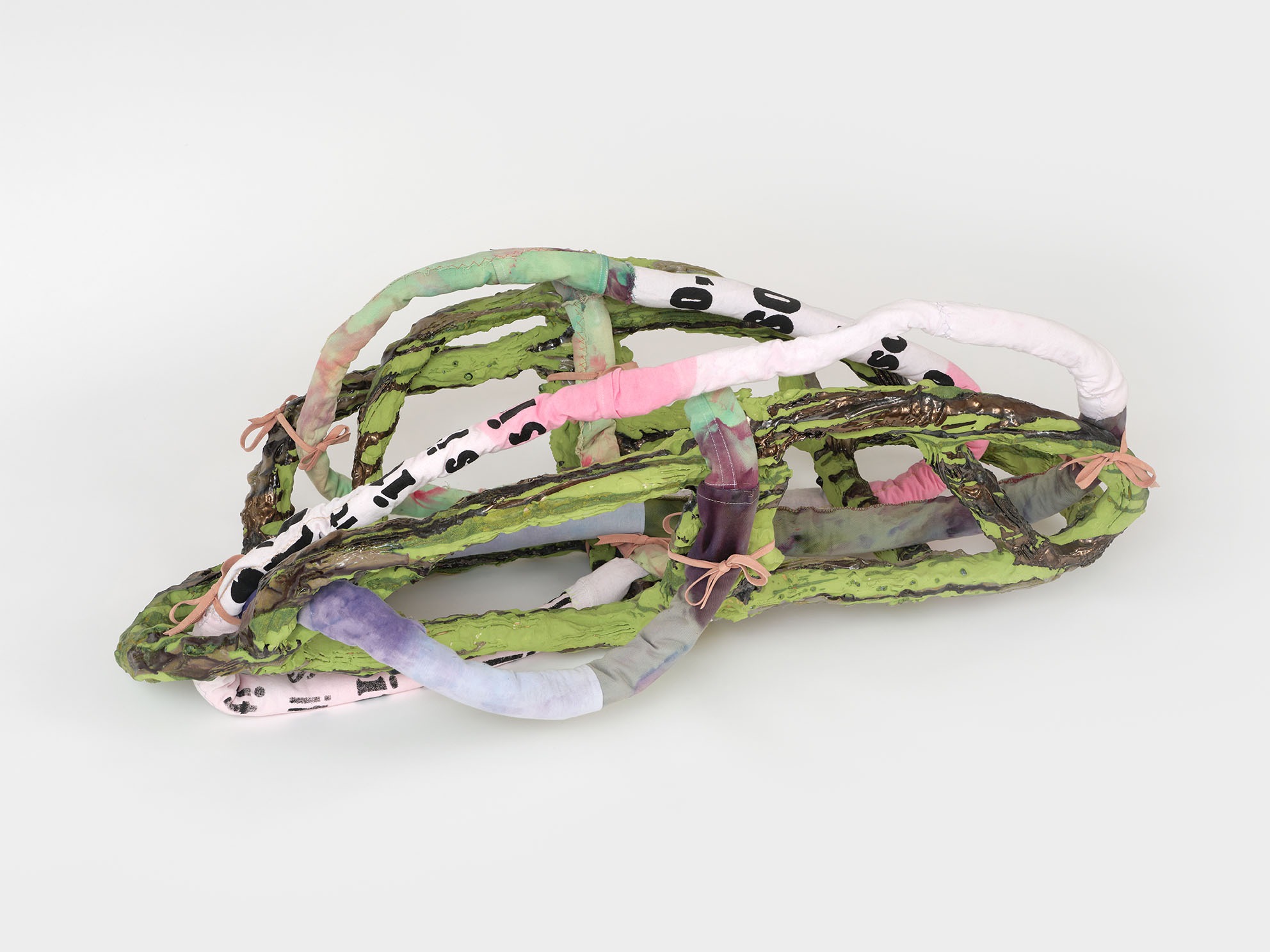
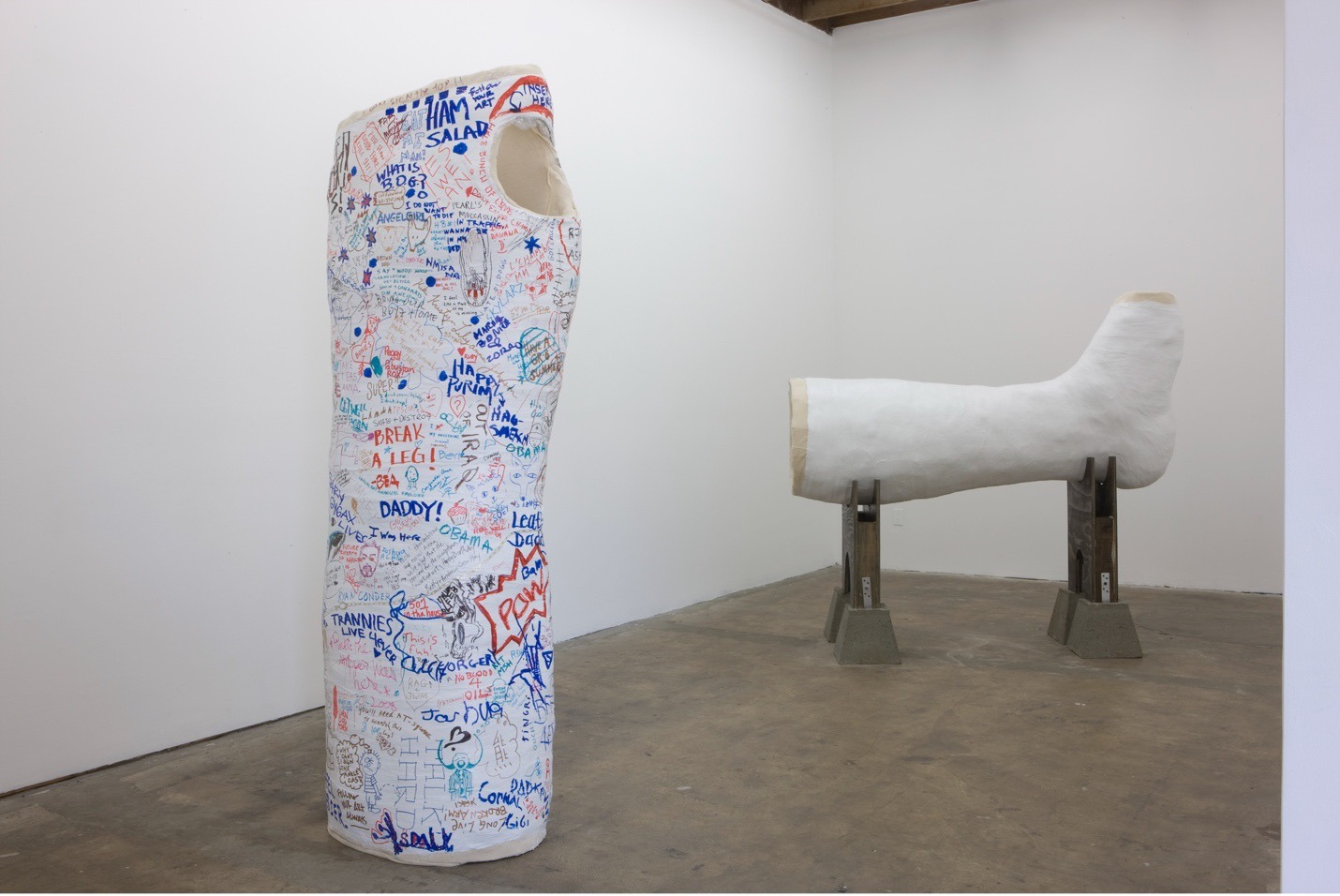
Perret: Words applied on sculptures. That was your first of that kind?
Sew Hoy: Actually, you’re reminding me that I had done it earlier, in 2002. I had a show at Peres Projects in Chinatown [Los Angeles] and I had a big chunk of eucalyptus, which I found on the roadside, where somebody had just cut down a tree. I found this gnarled section. It looked like a heart, and it was freshly cut, so it was kind of raw. And I took it home and just kept it in the studio for a while. I realized it was a thing that could be completed by many, so the day before the opening of the show, all my friends and family came and we burned our initials into one section of it, and that finished the work, titled Yearbook.
I think with The Screaming Cumulus, though, it’s different. In this new work I’m staying with the inner voice, I’m starting from the inside. How does it feel to be a body and how do bodies combine and disrupt each other—how do they affect each other? With Scratching at the Moon, the question was how do we deal with being in the outside world—how do we come together to deal with external circumstance? With The Screaming Cumulus I explore issues of trying to share intimate feeling with one other person, and how tender or treacherous that can be.
Perret: It’s interesting that you mention the inner voice—especially given that the title references screaming. Was there something you felt needed to be released, something pressing to be expressed outwardly? As a viewer moving through the exhibition, I felt genuinely welcomed. The flow between the different works was generous, even inviting. The way each piece was positioned in relation to the others created the sense of entering distinct rooms—each one unfolding a different narrative. Were those rooms meant to represent fragments of inner thoughts or emotions you were hoping to share with us?
Sew Hoy: Yes. The work is not necessarily loud, though the title is really loud. The emotions that I was working with were loud. I had two titles in mind for the show. Besides The Screaming Cumulus, the other one was All Allow, which is a phrase that I found while drawing words. This one has in it the generosity you’re referring to, and I ended up naming a sculpture in the show All Allow.
To get the words, I used an automatic writing process, putting my consciousness on the page as raw material. I try to write faster than I can think, not editing what I’m saying, just writing, allowing flow. The words I end up with don’t necessarily reflect my direct experience—mass media and culture also flow through me. Automatic writing was a surrealist strategy, a way to get out of preconditioning. So, the words are raw, as wet clay is very raw.
And so I started with different modes, including intense screaming in the writing, but by the time I finished working—I mean, it takes me months to make a sculpture. So it started with an outpour, unintelligible emotion meeting clay, and I processed clay and words to bring them together. By the time of the show, I guess they were silent screaming, fiercely whispering. Yeah, and it was about an inner voice, which you can’t even hear outside of yourself. So, The Screaming Cumulus became the opposite of screaming. It’s turned inward. And a cumulus cloud is that fluffy, white bouncy cloud that kids draw, but if you try to touch it—
Perret: —you can’t touch it.
Sew Hoy: Yeah, it’s an immaterial material. The first word that I caught onto for this group of work was the word tacit. I was drawing last spring and for some reason I felt that word and I wrote it and I kept returning to it. It means “everybody knows,” but whether you agree or not, you kind of accept it and keep going. It’s a very interesting word to place against screaming. Like we’re screaming, but we also play along at the same time.
Perret: Would it be fair to say that this is what makes your work political? The emotion you bring into the frame—the personal—and in doing so, it reverberates outward, taking on a political charge. Your practice seems to challenge that—the “tacitness” we live in, gently but powerfully.
Sew Hoy: I think I move through the world knowing that my actions affect others. In that case, it’s really important to have quiet space to think and feel, in order to figure out what’s happening, to have a position, and to understand why something is okay or not okay. Am I going to play along, but then do something that subverts it all? Art-making is not the same as on-the-ground actions, but it reflects my position. My efforts towards consciousness and resistance happen at every level: how I raise my kids and how I keep a household, how I have friendships and how I am as a teacher. The work comes out of my self-questioning and criticality—it shows the inner dialog, the forming of a position.
I had a quiet childhood where I was very protected. I didn’t go out much. I just went to school and then I came home, and I played with my siblings. We didn’t go out to dinner but my mother cooked at home every night. We were new to this country, so we were fairly isolated. Our social life consisted of hanging out with a tight group of British expats at first, and our extended Chinese New Zealand family when some family member moved here to join us. I had a lot of time to have an interior life and be bored, so I read a lot.
And then in my twenties I started to write more seriously. I wrote in a group led by Laurie Weeks, who has been a big influence on me, and a collaborator. Laurie is incredibly sensitive. She’s like, did I hurt your feelings? Did I hurt a worm? And her writing is incredible because it comes from that sensitivity. But she said something that helped me in my own teaching. She told us that whatever you make is as important as the Mona Lisa—an amazing thing to think about when you’re creating because it gives you the power you need to do it.
During the pandemic, I started to write regularly with people online. So, there were two groups that I was meeting with. One was a mother’s group, which included Patty Chang, Michelle Lopez, Litia Perta, and others, and we met weekly, trying to reckon caring for kids and continuing our work under lockdown. At the same time I committed to a regular writing practice. The poet Jae Yeun Choi, who wrote the press release for The Screaming Cumulus, has been my longest running writing partner.
Perret: Maybe there’s also something quite practical in writing. As a sculptor who works with clay, your practice is deeply physical. Sculpture requires the body; you bring your whole physical presence into the work. So perhaps language offers a kind of lighter counterpart—a way of producing thought, projecting ideas, and processing meaning without the same physical strain. It seems like those two modes—language and sculpture—complement each other and bring a balance to your practice, which feels central to your work.
Sew Hoy: I think of writing as this way to bring in the emotional or to really say in a sculpture: I’m using material in an emotional way. The sculptures are about interiors and they’re about thinking.
Perret: Yes. Do you see the act of projecting words onto them—through automatic writing—as a way of invoking presence? A means of giving them a sense of figuration, perhaps not through shape, but through language? Almost as if the words become a way to embody the abstract, to gesture toward the figure without depicting it.
Sew Hoy: The words describe feeling. And the sculptures are emotional bodies.
Perret: I sense it—not in an overt way when looking at the work—but I can feel that, in your mind, this is the space you’re navigating, the idea you’re holding onto.
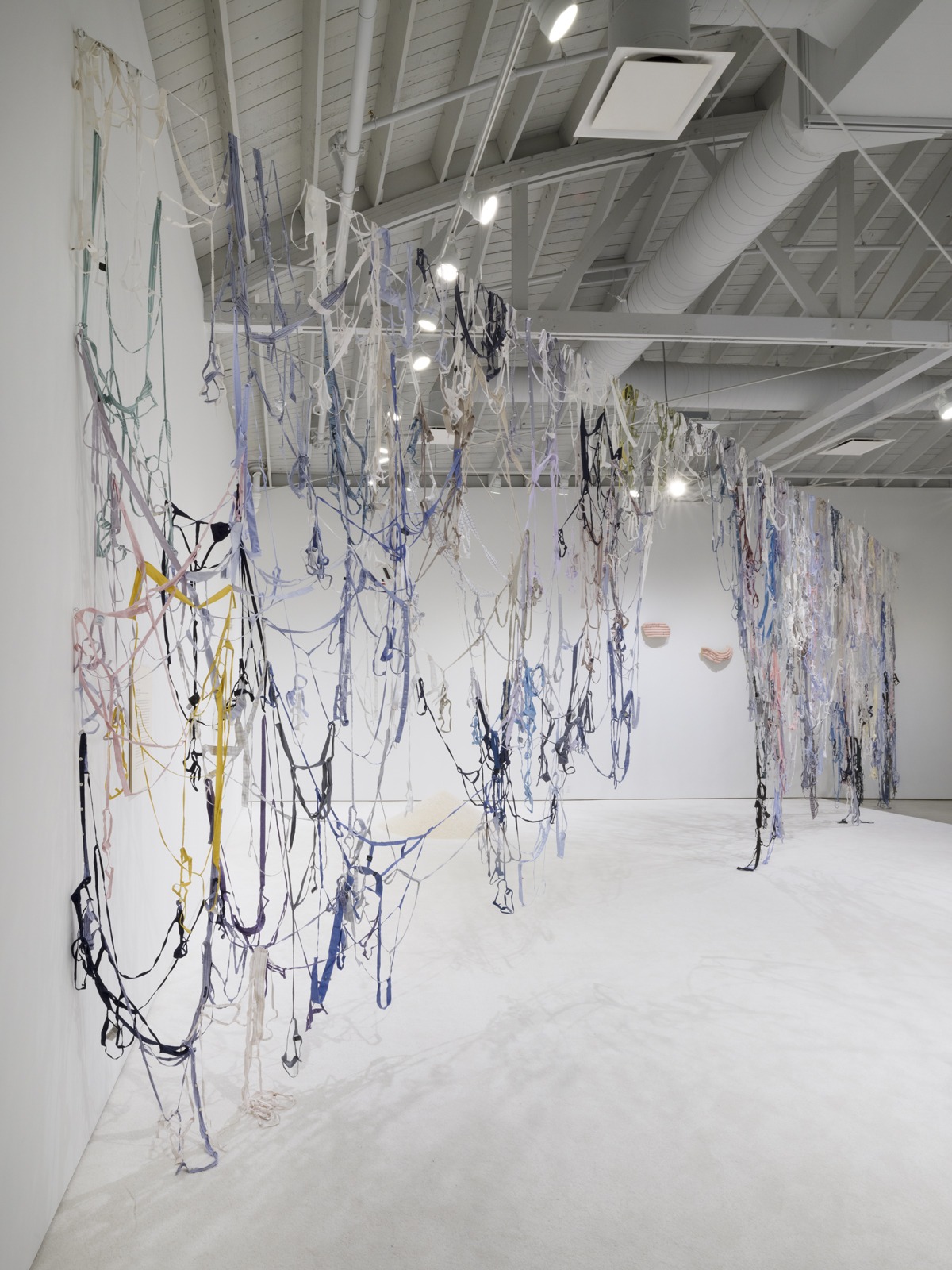
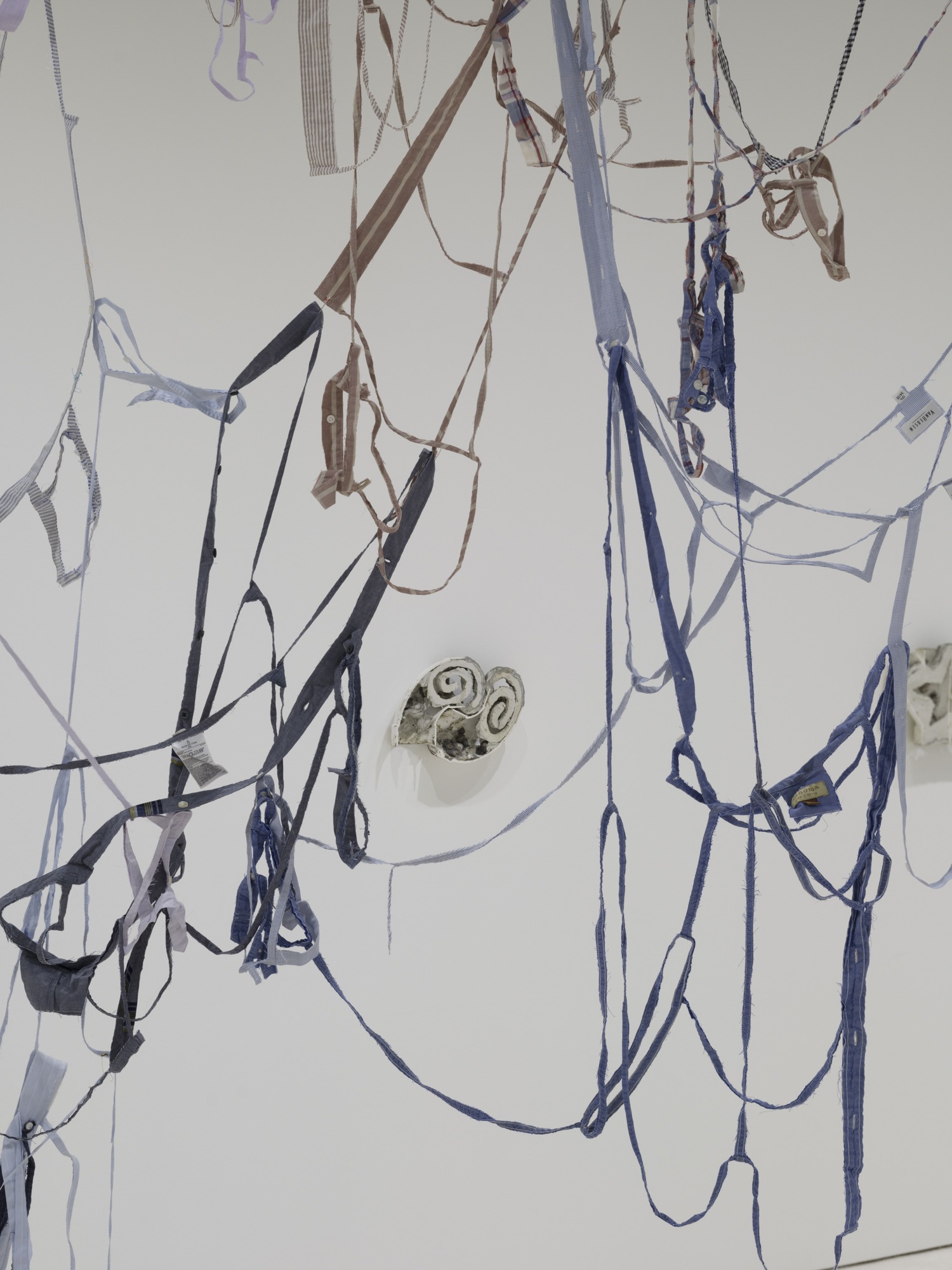
Sew Hoy: I want to try to somehow have intense sensation in my work, even if the forms are sometimes refined in the end. I’m conscious of keeping things raw where they can be raw. And then I also enjoy the making of a large, reductive form and knowing how much time and controlled action that actually takes when making in clay and glaze.
Perret: When you talk about refinement, could it be that much of it comes from the way you use color? The combinations you choose aren’t obvious—they’re unexpected, almost like little candies, sweet and sour. You have such a distinctive approach to color. Can you speak to how it functions in your work? Because as a sculptor, it’s not necessarily expected that you’d treat color with such particularity. How did that develop for you?
Sew Hoy: I think the experience of seeing specific color combinations can elicit feeling and associations in the viewer. I use a lot of faded fluorescent colors, like faded neon pink and faded neon yellow, and I know that I gravitate to those colors because I grew up in Santa Monica. In the late 80s, walking on the Venice boardwalk, I would see all the day-glo sweatshirts, which were so fashionable, but then they’re out in the sun for weeks and they get faded, and I love that color. There’s a lot of Southern California in the color choices. The turquoise and magenta, these jewel tones, I also bring in from my childhood. There are colors that I gravitate to. And I think it’s from really early, from my treasured Pentel marker set, for example, that specific aquamarine marker. I loved that aquamarine, knowing that it was a color as well as my birthstone and just feeling like that’s my color.
I’m a sculptor, but I use ceramics, and ceramics also means glaze. Therefore color is implied in the use of ceramics. On top of that, glaze also has countless surface effects—glossy, dry, cracked, blistered. I make use of all of these qualities to build meaning.
Perret: You also mentioned that clothing and fabric are part of your visual landscape—materials you’ve always been drawn to, right?
Sew Hoy: I love clothes, and I love patterns on fabrics, acid wash, stone wash, and the differences between those. I’m from New Zealand, which is cold and rainy, so I’ve grown up with scratchy wool blankets with tartan patterns. Terrible but wonderful scratchy sweaters hand-knit by my grandma. I enjoy getting dressed because it’s this daily opportunity to color clash and make combinations that surprise myself and others. Clothes change the shape and color of your body. There’s a part of finishing a sculpture that feels a lot like styling a body to me. I have been using jeans forever next to my clay.
Perret: Yes, it’s wild—clay and denim, two worlds colliding. And yet, somehow, you make it work. It’s almost as if this fusion comes effortlessly to you.
Sew Hoy: There’s a certain oneness I believe deeply in. I want to see the most different things I can think of jammed together. This belief really drives my work. In the beginning, the reason I brought all these daily materials into the work was because I didn’t have any money, and I just used what I had around me. My very early work consisted of crashed BMX bikes and old Christmas trees taken from the sidewalk in January. While living in New York I collected so many abandoned bikes, or at least the frames that were left after other people stole the wheels off. I just started with those things. I always had jeans and everybody else always had jeans to give me, so I began using them in the work. Jeans become obsolete quickly because the styles and the cuts are constantly changing season to season.
Perret: Yes, for sure. There are trends.
Sew Hoy: There’s something amazing about denim as a material. It’s so strong. Jeans are a work garment, right? So, they’re made to withstand a lot of stress. I’ve cut them, sanded them, dyed them. When you cut them, the material frays—the white fibers start to come out. I’ve braided denim and sewn it into fat and thin worms that remind me of coils of clay. There’s just so many forms that a pair of jeans can take on. And clay’s addictive to me because there’s so many things you can do with it, so many shapes it can take and different states that it can be in: brittle, squishy, fragile, rock-like. Jeans and clay hold infinite possibility for me. I get sucked into making things out of clay because the challenge of it is really energizing. The difficulty of it gives me life. But I also think that if I didn’t have clay and I just had jeans, I could spend a whole life making work, diving just as deeply into jeans. There’s a lot there.
___________________________________________________________
Anna Sew Hoy, from top:
The Screaming Cumulus, Commonwealth and Council, Los Angeles, ourtesy of Anna Sew Hoy and Commonwealth and Council, photos by Paul Salveson.
Sign my Cast, wrist, 2008, POW! installation view, LAXART, Los Angeles, photo by Anna Sew Hoy, courtesy of the artist.
Multitude Wall, 2024 (and detail), button-down shirts, installation dimensions variable, Scratching at the Moon, Institute of Contemporary Art, Los Angeles, February 10–July 28, 2024, courtesy of Anna Sew Hoy and the Institute of Contemporary Art, Los Angeles, photos by Jeff McLane / ICA LA.

